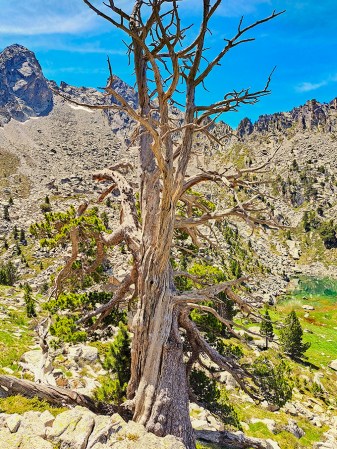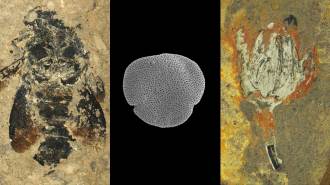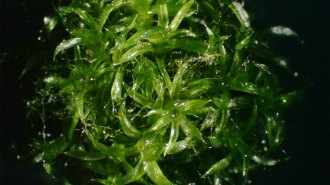
Mountain pines (Pinus uncinata) ramp down growth and reproduction as they age in favor of strategies that help them live for centuries.
Bob Gibbons / Alamy Stock Photo
Earth’s oldest, knotted and scarred pine trees are a boon for forest life.
These old mountain pines (Pinus uncinata) offer food and shelter for lichens and insects not just because they’re old, but also because of what’s allowed them to grow so old in the first place, researchers report February 5 in the Proceedings of the National Academy of Sciences. The findings highlight the broader importance of big, old trees, and suggest threats to their survival from development, fire or climate change could deliver irreparable harm in certain ecosystems.
Old growth trees continue to decline around the world (SN: 6/18/18). In Europe, the remaining patches of forest with plentiful old trees constitute just 0.7 percent (or just under 3.5 million acres) of the continent’s forested area. This paper and others like it “are really good, because they show how important old growth is,” says Joseph Birch, an ecologist at Michigan State University in East Lansing who wasn’t involved with the research. This line of work serves as a reminder that we need to have a long-term perspective on old growth trees. “We need to be managing and conserving the forests that we have now, even if they’re younger, so that our descendants in a few hundred or even thousand years can have more old growth on the landscape,” Birch says.

While the pines’ old age, potentially hundreds of years old, was intriguing to plant physiologist Sergi Munné-Bosch and ecophysiologist Ot Pasques, both at the University of Barcelona, they have also been curious how aging and tree decay affect the broader forest ecosystem, with different life and decay stages providing differing habitat needs to plant, animal and lichen species.
Prior studies tended to look at how individual trees aged. So Munné-Bosch and Pasques decided up the ante. They studied young, adult and extremely old mountain pines in five different areas of the Spanish Pyrenees mountains. The duo calculated the trees’ ages based on tree trunk girth. (The two traits are correlated, eliminating the need to bore a sample out of the trunk to count tree rings). The team also weighed and measured needles, buds and shoots, analyzed the trees’ tissues for biochemicals linked to stress, decay and growth and noted age-related physical traits in the trees — such as exposed roots, fissured bark and lightning scars. Data on other species living in or on the trees were also recorded.
The results show that the oldest trees no longer spend a lot of energy on reproduction, ramping down the production of cones and buds, slowing their growth considerably and prioritizing stress tolerance and long-term durability. Ancient trees also allow parts of their bodies to die and decay alongside living sections. These are adaptations for staying alive hundreds of years, and they make the oldest trees knotted, scarred and full of large, dead sections, which are exploited by other forest life.
Ant colonies and plants like mountain houseleek (Sempervivum montanum) live in these dead and decaying sections. Trees with biochemical changes associated with decline and decay also tended to host more lichen, and the bigger, older trees had a higher diversity of lichen living on them. “Lichens look for very specific microhabitats for survival in high mountains,” Munné-Bosch says. Wolf lichen (Letharia vulpina), for instance, is rare in this part of Europe, and when the team encountered it, it was growing mostly on ancient pines.

Younger pines, which don’t have the unique physical and physiological features of ancient trees, can’t support forest life like ancient trees do. This makes ancient trees’ ecological role “irreplaceable,” Munné-Bosch says.
“For a lot of people who work with old trees, this is something that we intuitively knew. But it hadn’t necessarily been presented in this way and with such a compelling body of evidence to support it,” Birch says.
These results are only for a single tree species, he notes. In giant sequoias, which live thousands of years, aging doesn’t cause the tree to contort in shape as dramatically as the stunted mountain pines that grow at high elevations, so ancient sequoias’ influence on biodiversity might look different.
Branching out to study other tree species is the team’s next step, Munné-Bosch says.






